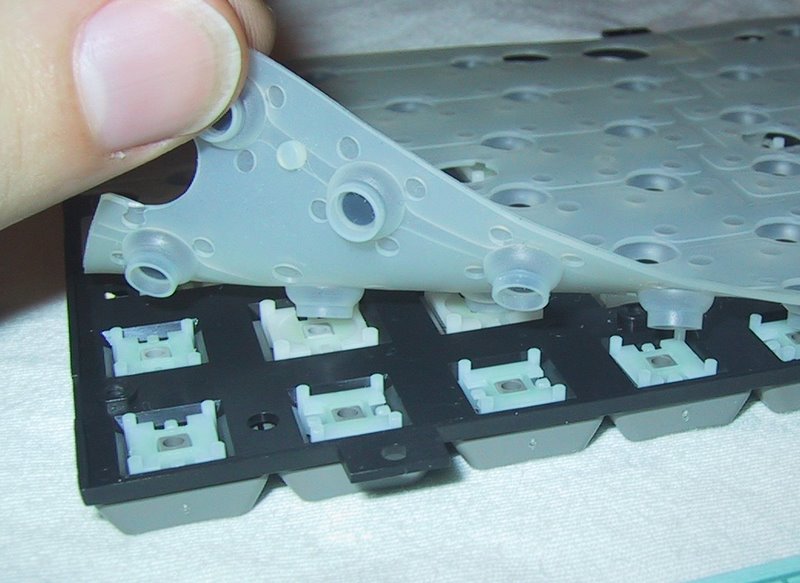Discovering the Advantages of Membrane Layer Switches for Modern Electronics
The expedition of membrane switches in modern electronic tools supplies a remarkable point of view on their myriad advantages, especially in regards to design versatility, longevity, and cost-effectiveness. These interfaces not only withstand extreme environmental problems but additionally offer a high degree of modification, which is progressively essential in today's open market. As markets continue to progress, the duty of membrane switches in improving user experience and operational effectiveness warrants better evaluation. Recognizing just how these components can shape the future of digital applications may reveal insights that might influence style and production methods dramatically.
Benefits of Membrane Layer Buttons
Membrane switches are progressively preferred in modern electronics due to their numerous benefits. Among the main benefits is their small style, which enables for space-efficient integration into numerous devices. This slim profile not only conserves space yet likewise contributes to the general aesthetic appeal of electronic items.
An additional advantage is their toughness. Membrane buttons are generally resistant to dampness, dust, and impurities, making them excellent for use in environments where exposure to rough problems is a concern. This resistance expands the life-span of the buttons, minimizing the requirement for frequent substitutes and upkeep.
Furthermore, membrane changes deal exceptional responsive feedback, enhancing user experience. The responsive reaction is commonly created to provide a rewarding experience upon activation, which can boost individual contentment and efficiency.
In addition, the manufacturing process of membrane switches is cost-efficient, permitting lower manufacturing expenses contrasted to standard mechanical buttons. This cost makes them appropriate for a variety of applications, from customer electronic devices to commercial machinery.
Style Versatility and Personalization
The design versatility and modification choices offered by membrane changes further improve their allure in modern electronics. These switches can be tailored to fulfill certain visual and functional needs, allowing makers to create devices that line up closely with brand identity and customer choices. With various options in regards to shades, forms, and sizes, membrane layer switches can flawlessly incorporate right into varied item styles, whether for customer electronics, commercial applications, or clinical tools.
In addition, the capability to include graphics and icons straight onto the switch surface boosts use while lowering the demand for additional labeling. This assimilation not just simplifies production processes but additionally adds to a sleeker total appearance. The layout can be more customized through attributes such as backlighting, responsive feedback, and multi-layer buildings, offering improved individual interaction.

Resilience and Ecological Resistance

In addition, membrane switches can be engineered to be chemically resistant, making them appropriate for applications in commercial atmospheres where direct exposure to solvents and cleaning agents prevails. The encapsulation of electronic elements within the membrane structure supplies added defense versus ecological stresses, making sure dependable performance even in challenging conditions.
Along with physical sturdiness, membrane switches exhibition excellent resistance to UV light, preventing destruction and staining with time (membrane switch). This particular is especially helpful for exterior applications, where long term direct exposure to sunshine can endanger other button types
Inevitably, the sturdiness and ecological resistance of membrane layer switches make them an optimal option for a wide variety of modern-day digital gadgets, from clinical devices to consumer electronic devices, making sure constant check it out performance and customer complete satisfaction dig this across different applications.
Cost-Effectiveness in Production
Cost-effectiveness in manufacturing is a significant advantage of membrane layer switches, making them a favored option for producers in different sectors. The manufacturing procedure of membrane layer changes usually includes less materials contrasted to conventional buttons, which reduces raw product prices. This streamlined manufacturing process not just conserves money yet also lessens waste, aligning with modern sustainability goals.
Furthermore, membrane layer switches can be created making use of automated strategies, enabling high-volume output with decreased labor expenses. The combination of innovative printing modern technologies additionally boosts effectiveness, enabling manufacturers to accomplish complex styles and performances without sustaining significant added costs. This scalability ensures that production can adapt to changing market needs without compromising quality or raising prices.

Furthermore, the light-weight nature of membrane layer switches adds to set you back financial savings in delivery and handling, in addition to in the total design of electronic tools. By getting rid of bulky elements, makers can enhance the general product style, therefore enhancing market competition. Generally, the cost-effectiveness of membrane changes not just advantages producers economically but also promotes development and fast product growth in the dynamic landscape of contemporary electronics.
Applications in Various Industries
Versatility sticks out as a trademark of membrane switches, enabling them to locate applications across a large range of markets. In the health care sector, these buttons are important to clinical devices, supplying easy to use interfaces for equipment like mixture pumps and diagnostic makers. Their resistance to dampness and easy cleaning make them suitable for environments requiring rigorous health criteria.
In the vehicle sector, membrane layer switches add to the performance of dashboards and control panels, providing a smooth, modern-day appearance while guaranteeing durability versus rough conditions. Their next light-weight style likewise supports general automobile performance.

In addition, commercial equipment uses membrane layer switches for functional controls. Their durable nature and customizable features satisfy the particular demands of diverse applications.
Final Thought
In final thought, membrane switches over deal substantial benefits for contemporary electronic devices, consisting of design adaptability, sturdiness, and cost-effectiveness. membrane switch. Their customizable functions and resistance to ecological aspects make them ideal for a large range of applications throughout numerous markets. As technical needs remain to progress, the adaptability and effectiveness of membrane switches position them as a crucial element in improving individual experience and driving innovation within the competitive landscape of digital tools